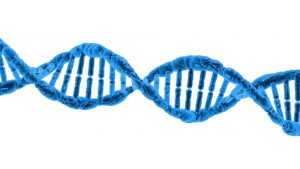DNA is often referred to as “storing genetic code” or “data”. Information of sorts. While this is true, it is a bit different from data when referring to it in layman’s terms; data is often associated with the internet and computers. However, the line creating this barrier of difference is becoming very blurred. A study at the Beckman Institute of Science and Technology claims that DNA and its double helical structure can be used to store anything; including virtual media.
Though DNA is microscopic in size, its ability to store information is colossal. According to Kasra Tabatabaei, a researcher who helped conduct the study, “Only one gram of DNA would be sufficient” to store the several petabytes of data that are created from the internet each day. To say that this is staggering would be terribly understated. Furthermore, DNA is quite durable. It has a longevity to it that is rivaled by few other mechanisms on the planet. The material can last for thousands of years without severe damage to its ability to store information as it’s supposed to. There is also little competition with DNA when it comes to abundance. Due to the fact that there is DNA present within each living thing, there is quite a lot, to say the least. This makes it a very sustainable source of storage, as the odds that there will be a shortage is extremely unlikely.
Of course DNA has a large capacity but it seems almost necessary to expand upon it in order for the material to truly be able to slay the informational beast that is the internet. DNA already has 4 naturally occurring chemicals; Adenine,Guanine, cytosine and Thymine, that allow for it to have such capacity. To allow for its capabilities to transcend adequacy, the researchers added seven artificial nucleases. To find which would work, they experimented with “77 different combinations of the 11 nucleotides”. This change expands DNA’s capabilities tremendously, as it opens doors for a much larger range of data that can be stored.
The internet is boundless. Where technology takes the human race next is still largely unknown. However, none of it can be done without data, and the future of data storage may be exactly where it started.



Leave a Reply